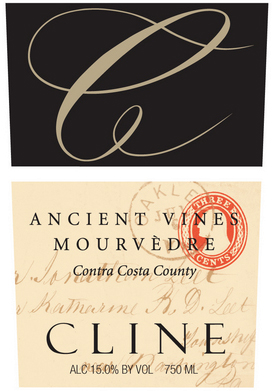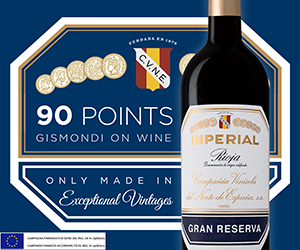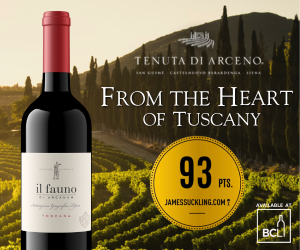The sound of a cork being pulled from a wine bottle is often described as the most romantic moment in wine.

I would maintain the sound of clinking bottles being stored or pulled from a wine cellar, of any size or description, is far more romantic and ultimately more rewarding.
Proper temperature-controlled underground wine cellars are out of reach for most wine enthusiasts but makeshift rooms in the basement are appearing with frequency and many apartment and condominium dwellers are buying specialized wine refrigerators/storage units. Mobile collectors and those strapped for space are also using private wine storage companies such as the Vancouver Wine Vault or 13C Wine Storage.
No matter what your choice, the decision to maintain a modest wine cellar makes a lot of sense because most every wine gets better in the bottle. Storing wine, even a few weeks or months, in a quiet, cool place allows the wine to rest and settle down and recover from the shock of being bottled, shipped and generally bounced around in its early life. Also not to be dismissed - buying bottles young means you will always pay the minimum value, never a bad thing.
All this leads to the inevitable questions: How long you should lie down or cellar wine, and to what purpose? Better yet, how will you ever know when your bottles are ready to drink? I'm a big fan of the seven to 10 year rule. Red wine simply tastes better given bottle age and, based on some 30 years of cellaring wine, most bottles tend to excel between the ages of seven and 10 when all the components meld together, offering a flavour that is more than just fruit or oak but rather something far more complex. Once you come to know the delight of sipping aged wine, it is very difficult to go back to drinking youthful versions of the same wine.
There is a caveat for newbies. Remember, not all wines are made to improve with age. Bottles labelled rosé, aromatic and unoaked require little or no cellar time, in fact, the attraction is pure, fresh, unadulterated primary fruit.
Price can often be a guide; few wines under $15 are designed for aging, although reds that contain large amounts of Cabernet, Syrah, Mourvèdre, Malbec and Zinfandel will all benefit from cellar time no matter what their cost.
Because most red wine is fermented on, and left in contact with its skins for an extended period of time to extract large amounts of colour and tannin (before it is aged in wood), it needs time to for all the parts to combine and become a seamless, balanced delicious wine.
How long you can age wine is a tougher question. Top wines from highly rated vintages can easily age a decade or more under perfect conditions i.e., a dark, cool (8-14C), vibration-free space with a humidity level of about 60 per cent. That said, heed this advice: Wines do not live forever. I have a number of bottles in my cellar that should have been drunk years ago.
Although I must admit from a pure, historical sense there is nothing better that opening a bottle of wine made 30 or 50 years ago to put your life in perspective.
Terra Andina Semillon Chardonnay 2011, Region del Valle Central, Chile
Price $11
UPC 00830212000624
Score 85/100
Remarks Honey, baked apple, lime, pear skin aromas with a bit of leaf
and gooseberry. Round, soft, forward palate with buttery, citrus, herbal, nettle,
grapefruit, leafy flavours. Simple, easy style and good value. Drink now.
Nederburg Sauvignon Blanc The Winemaster's Reserve 2012, Western Cape, South Africa
Price $13
UPC 083206000531
Score 86/100
Remarks The 2012 is fresher than last year with less asparagus more
grapefruit and gooseberry aromas and flavours. Crisp fresh and bright with lemon and
grass highlights and a dry finish it is all it should be for the price. Try this
with your favourite shellfish or a piece of fresh goat cheese. Good value.
León de Tarapacá Sauvignon Blanc 2011, Valle del Maipo, Region del Valle Central, Chile
Price $13
UPC 00633567909549
Score 87/100
Remarks An easy-drinking commercial version of this variety with a fair
whack of residual sugar. The aromas and flavours are a mix of citrus, grass, pink
grapefruit with red apple with just a hint of dried herbs. More picnic style or wine
to be served on the patio with spicy appetizers. A kinder gentler version of the
aggressive New Zealand style. Try this with a goat cheese salad.
Castillo de Monséran Old Vine Garnacha 2008, Cariñena, Aragon, Spain
Price $15
UPC 3378633006223
Score 86/100
Remarks Earthy, liquorice root, tobacco, savoury, compost, light black
raspberry aromas. Round, dry, soft but fresh palate with light tannins. Cedar,
vanilla, tobacco, pepper and orange peel flavours. Solid fruit but a bit tart on the
finish. Try this with chicken.
Pere Anselme La Fiole Cote du Rhone Grenache - Syrah 2011, Rhone Valley, France
Price $19
UPC 3217661015343
Score 86/100
Remarks La Fiole has a storied history in Canadian monopoly's stores
and at times it seems as if it was the only Châteauneuf-du-Pape in the country. This
simple Cotes du Rhone rides the La Fiole wave right down to the crooked neck bottle.
Look for a soft simple red with sweet red fruits and milk chocolate notes with a
modicum of spice and earth. Ready to drink with lighter meat and chicken dishes.
Cline Ancient Vines Mourvèdre 2010, Contra Costa, California, United States
Price $26
UPC 98652600020
Score 88/100
Remarks The excellent Ancient Vines series features Rhone varietals
such as this Mourvèdre or Mataro. Look for a ripe lifted fruity nose of blueberries
and pepper. The plate is super smooth and glossy with sweet blueberry meaty fruit
dusted with chocolate and pepper. Rich hedonistic and ripe this wine will appeal to
a wide audience. Drink or hold for another three years. The winery suggest try this
wine with grilled lamb, wild mushroom ragout, duck confit or peppercorn crusted beef
tenderloin
Read more: http://www.vancouversun.com/life/aging+process/8142811/story.html#ixzz2PQUpTXdy

 quicksearch
quicksearch





